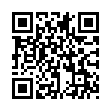|
This article is cited in 2 scientific papers (total in 2 papers)
On classes of hyperfunctions of rank 2 generated by maximal multiclones
V. I. Panteleyev, A. S. Zinchenko
Irkutsk State University, 1, K. Marx st., Irkutsk, 664003
Abstract:
The research of multifunctions is a one of the directions in discrete
function's investigations. Multifunction is a discrete function from
a finite set A to all subsets of A.
The set of hyperfunctions is a subset of set of multifunctions.
Hyperfunction is a discrete function from a finite set A to all
nonempty subsets of A.
The subset relation of hyperfunctions to maximal multiclones is a
relation of equivalence and according it all hyperfunctions are
divided into equivalence classes.
Based on this equivalence it is possible to estimate the cardinality
of all possible bases, calculate the number of different types of
bases of the same cardinality, and construct some intervals of the
clone lattice.
Knowing the number of maximal clones, we can obtain upper-bound
estimate of the number of such classes as the cardinality of the set
of all subsets of the set of maximal clones. It possible to lower this
estimate by using properties of the hyperfunctions . A lower-bound
estimate for the number of classes can be obtained by constructing the
corresponding classes.
It is noteworthy that the complexity of the problem of describing all
equivalence classes increases essentially with the cardinality of the
set of maximal clones increasing.
This paper considers multifunctions on a two-element set. The number
of maximal multiclones equals to 15 (Panteleyev V. I., 2009).
The primary purpose of this research is describing the classification
of the set of hyperfunctions into equivalence classes.
As Kazimirov A. S. and Panteleyev V. I. showed there are 18 equivalence
classes on the set of Boolean functions, which is a subset of the set
of hyperfunctions.
In this paper were obtained special properties of hyperfunctions and
were described all the equivalence classes generated by functions of 3
arguments having applied a computer experiment. The obtained results
made it possible to show that the subset relation of hyperfunctions to
maximal multiclones splits the set of all hyperfunctions into 67
equivalence classes.
Keywords:
hyperclone, basis; hyperfunction, complete set, superposition, closed set, multifunction.
Citation:
V. I. Panteleyev, A. S. Zinchenko, “On classes of hyperfunctions of rank 2 generated by maximal multiclones”, Bulletin of Irkutsk State University. Series Mathematics, 21 (2017), 61–76
Linking options:
https://www.mathnet.ru/eng/iigum314 https://www.mathnet.ru/eng/iigum/v21/p61
|
| Statistics & downloads: |
| Abstract page: | 267 | | Full-text PDF : | 111 | | References: | 44 |
|



 Contact us:
Contact us: Terms of Use
Terms of Use
 Registration to the website
Registration to the website Logotypes
Logotypes








 Citation in format
Citation in format 
